How the Big Bang’s alternatives died
The last serious anti-Big Bang scientists went to their graves lamenting the lack of good alternatives. Here why there are none.
Image credit: NASA / WMAP Science Team.
“We were marching down the street, & we were at the head of the troops. We went on marching, & the troops went off to the left.” –Geoffrey Burbidge
The 1920s saw the conclusion of the greatest debate about the Universe from the prior generation. From the late 1800s all the way through the first quarter of the 20th century, the world’s leading scientists were split into two camps concerning the nature of some of the most interesting objects in the night sky: the spiral nebulae.
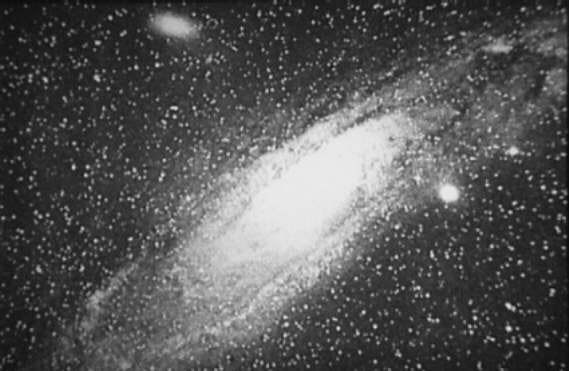
The majority of leading astronomers believed that these were proto-stars in the night sky: objects within our own galaxy that were in the process of collapsing down to form new stars and solar systems. On the other hand, a small but significant minority believed these to be entire galaxies — perhaps not so different from our Milky Way — all unto themselves. This latter group was bolstered by the recent discovery that many of these objects were moving at very large speeds, and in fact at speeds much larger than any other stars, nebulae or clusters observed within our galaxy.
But on a fateful night in 1923, Edwin Hubble made an observation in the great spiral nebula of Andromeda — Messier 31 — that would open up the Universe. He was looking for novae: for points of light in that nebula that would flare up, brighten, and then dim. He found one, then a second, and then a third. But then a fourth one went off… in the same location as the first. Even the fastest novae couldn’t have accumulated enough matter to go off again, and he realized there was only one explanation for this: it must have been a variable star!
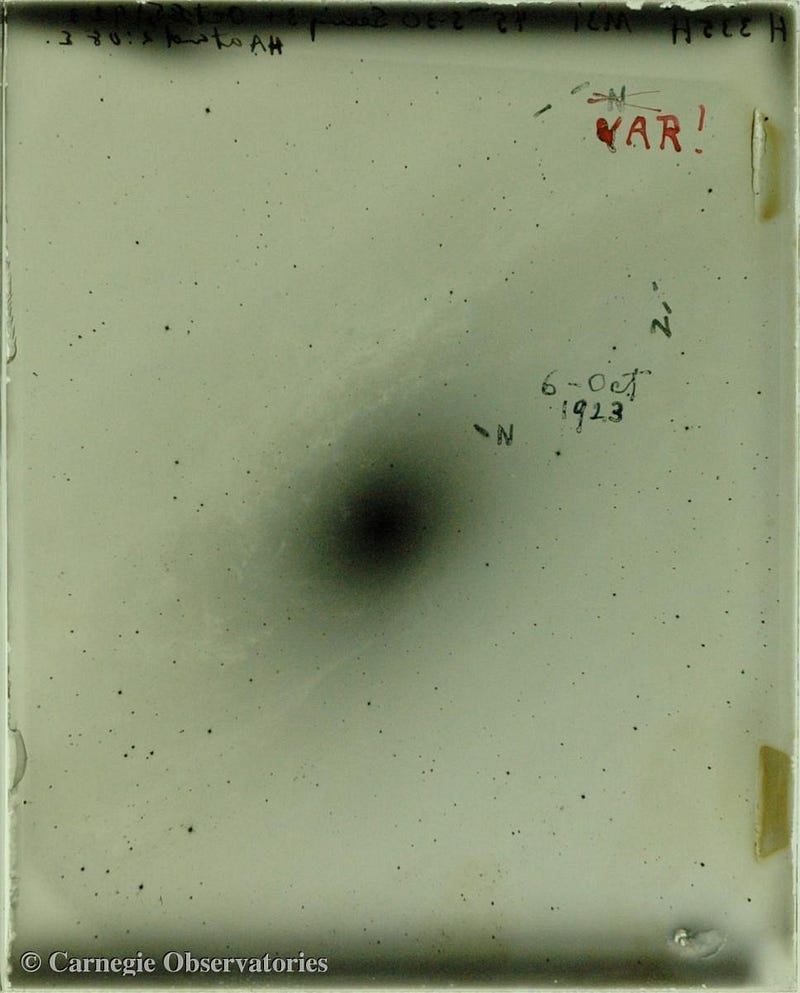
With this realization, it became not only clear that these spiral nebulae were much farther away than the extent of our Milky Way, but it became possible to measure exactly how distant they were. If you know, intrinsically, how bright something (like a variable star) is, and you measure how bright it appears to be, you can figure out its distance. Combine that with how quickly that object moves away from us — an easy measurement to make with the technique of spectroscopy — and you can figure out, by measuring many such galaxies, how the Universe is behaving beyond our galaxy.
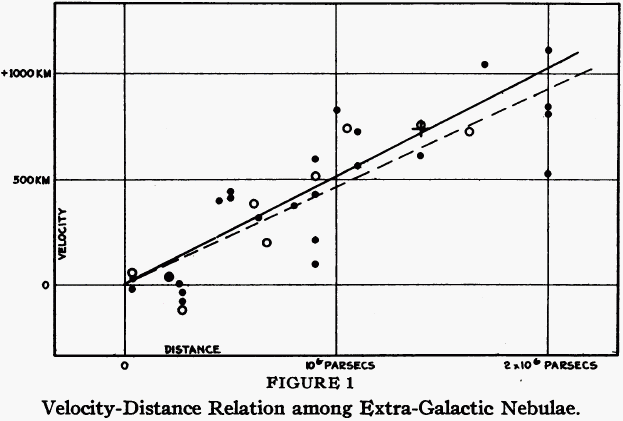
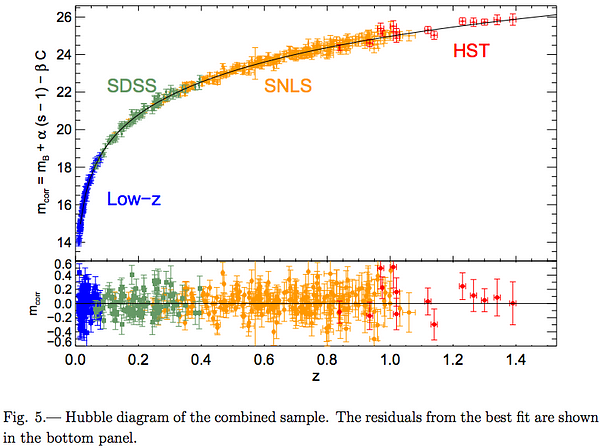
What we learned is that the farther away an object appears to be, the faster it appears to be receding from us. In other words, it appeared that the very fabric of the Universe itself was expanding.
This was not the only possible interpretation, nor did it necessarily imply the obvious: that because the Universe was expanding today, it was smaller in the past, and therefore hotter and denser. That was only one possible interpretation, the one that we identify today with the Big Bang model. Three other possibilities also deserved serious consideration at the time, even though the last of them was not thought of until the 1960s:
- The apparent recession of the distant objects in the Universe was merely an illusion, caused by the fact that light might get tired as it traveled these great distances. In a Universe with tired light, each quantum of light loses energy, a little at a time, as it travels through space. The more space you travel through, the more energy you lose. That’s one possibility: tired light.
- The Universe might actually be expanding, but that might not mean it was hotter and denser in the past, or that it will become cooler and less dense in the future. Instead, it might simply be creating new matter as the Universe expands, keeping the density of the Universe constant, and leading to a Steady-State Universe.
- And finally, the Universe expanding right now might just be a phase; it may have been contracting prior to that, in an oscillatory Universe. Oscillations such as these are common in plasmas, and since most of the Universe needs to be ionized for light from distant sources to pass through it, we’d only need to look back far enough to see if the expansion of the Universe seems to reverse into a contraction at large enough distances. This is known as plasma cosmology or a plasma Universe.
These three alternatives would all have been interesting, and each theory has its own set of predictions that come along with it. But there’s one prediction in particular that would not only make it possible to tell these three alternatives apart, but to tell the Big Bang apart from all of them.
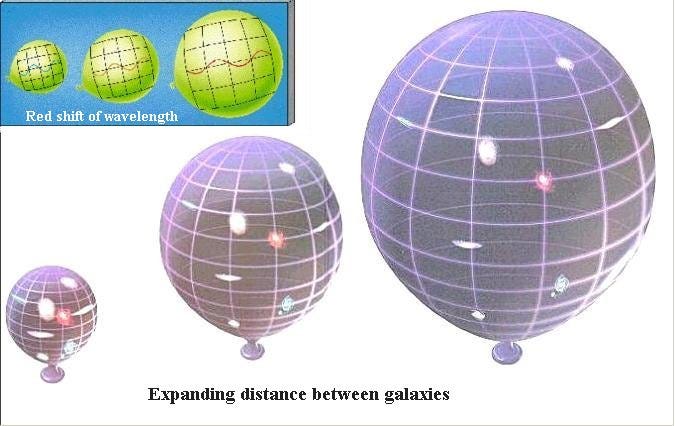
Think about what would happen if the Universe actually were expanding from a denser state in the past. Not only would both matter and radiation have been closer together in the past, with more particles-per-unit-volume, but the radiation would have been more energetic in the past as well. Remember that the energy of a photon is defined by its wavelength, and if the fabric of the Universe is stretching over time, that means the radiation in it now must be stretched to longer wavelengths (and lower energies) than it had in the past.
So the Universe was hotter in the past. And if we go back far enough, there must have been a time when things were so hot that neutral atoms couldn’t have formed, because the energy from the radiation would have ionized them!
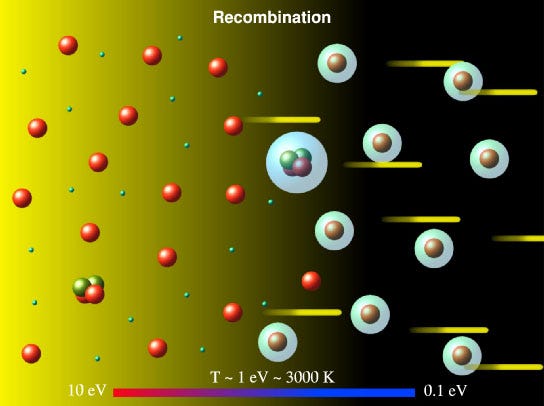
That radiation, it stood to reason, would still exist today. Only, because of how the Universe has expanded, it wouldn’t be thousands of degrees in temperature anymore, but only a few degrees above absolute zero. The other three theories mentioned above didn’t predict this at all, so the existence of this leftover radiation — of a cosmic background of radiation that would appear at microwave wavelengths today — would be strong evidence for the Big Bang.
In 1964, a discovery was about to shake up the world.
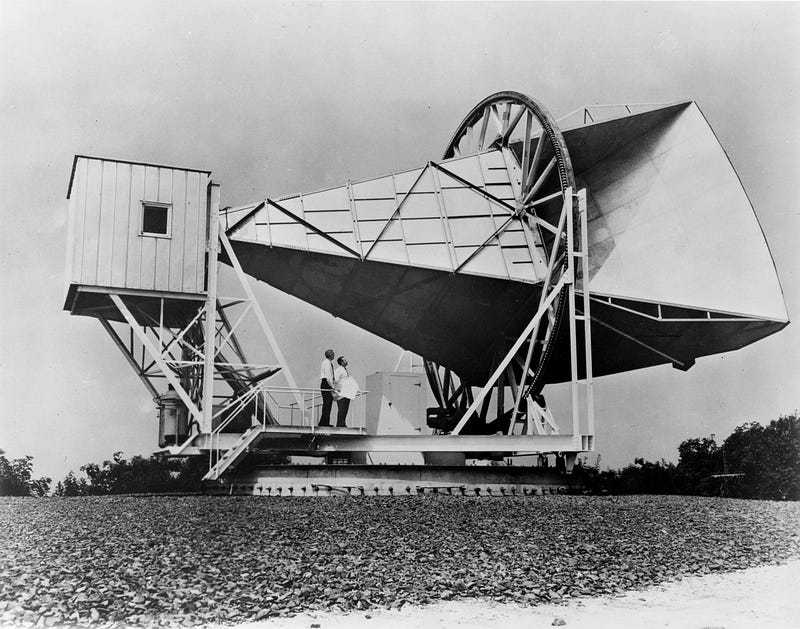
Over in Holmdel, NJ, Robert Wilson and Arno Penzias were working for Bell Labs, and were using a new horn-shaped antenna that was incredibly sensitive to long wavelengths of light: radio signals. They were attempting to detect radio waves bounced off of balloon-borne satellites launched by the Navy, but needed to make sure what they were detecting wasn’t contaminated by background sources of this same type of low-energy radiation. Background sources included radio broadcasts that could simply reach them from transmission towers and bounce off the atmosphere, as well as radar sources. The antenna itself would emit radiation as well, so to mitigate that they cooled it down with liquid helium, which – at just four K above absolute zero – should have suppressed any thermal noise.
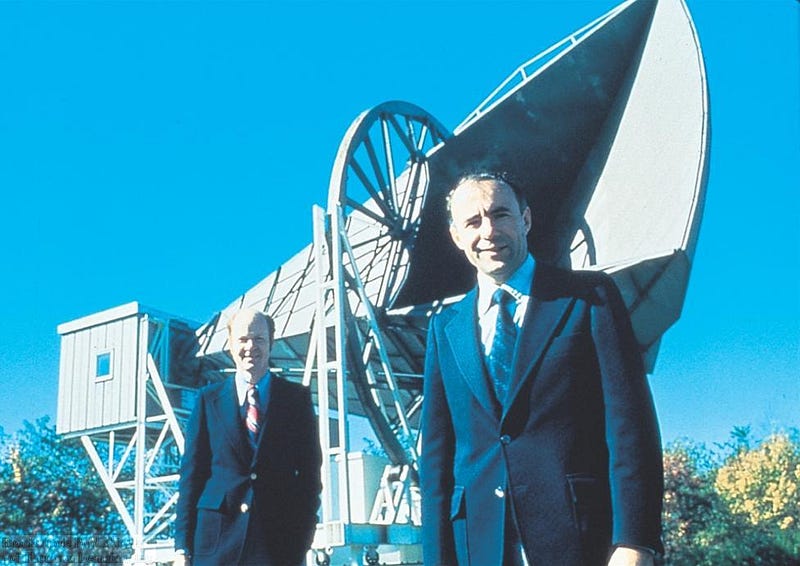
After taking their first sets of data, Penzias and Wilson were perplexed: even after accounting for radar and radio, and even after cooling the antenna down to these ultra-low temperatures, they were still seeing an intense background noise they couldn’t account for. Even more puzzling were the following two facts about it:
- It was approximately two orders of magnitude, or a factor of 100, stronger than the background they were expecting.
- It appeared no matter where they looked in the sky, in all directions, and equally.
Other sources of background noise would vary depending on where you pointed the antenna, on whether there were clouds overhead, on air temperature, and many other factors. But none of them seemed to affect what they were finding. That ruled out the three most conceivable sources of this noise: the Earth, the Sun, and the galaxy.
What they had found — which they figured out over the span of a few weeks — was the Cosmic Microwave Background that scientists had been seeking for decades.
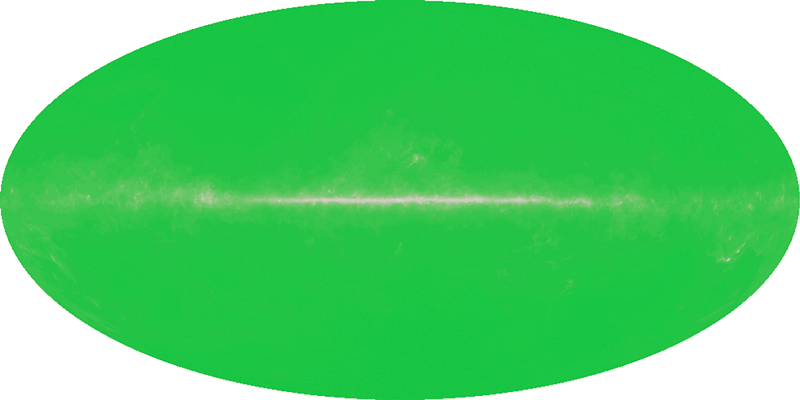
But this wasn’t enough to rule out all of the alternatives. Sure, the Plasma Universe no longer had a leg to stand on, as there was no conceivable way such a Universe would have generated this uniform background of radiation. But the other two options could have made a low-temperature background as well.
In the tired light scenario, there could simply be ultra-distant sources of light from uniform directions on the sky. This light — possibly from stars — could have simply lost energy over time, coming out as a very low-energy background today. This isn’t a prediction of tired-light, but it is a way that a tired-light Universe could have a low Temperature, uniform background of radiation in it as well.
But there’s a difference between this prediction and the Big Bang’s prediction! In the early Universe under the Big Bang, that radiation would be a near-perfect blackbody, with imperfections less than a single part in a thousand. But in tired-light, the spectrum would have initially been blackbody-like (such as, from a star), but as it lost energy, it would become a shifted blackbody, very different in spectral detail from a true blackbody.
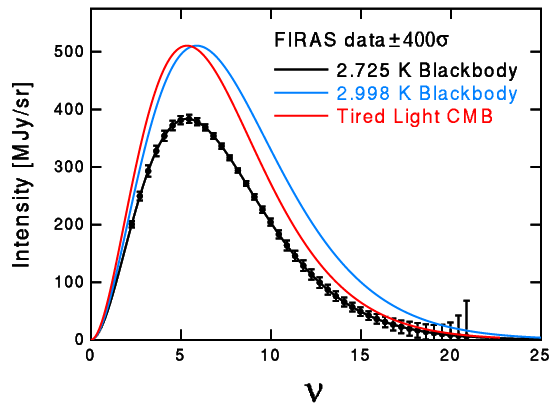
A similar thing is true for the Steady-State Model. It’s conceivable that there are a great many distant sources and stars in a Steady-State Universe, and that this light has had an arbitrarily long amount of time to either scatter off of distant sources and re-emit, or to traverse very large distances in an expanding Universe. Either way, you would have an almost blackbody spectrum to start, much like the surface of our Sun. Because stars don’t have a single, solid surface that they radiate from, but rather an extended photosphere thousands of kilometers thick, starlight is actually a sum of blackbodies of many different temperatures. As the Universe expands and this light redshifts, it wouldn’t be a true blackbody, but rather different at the level of about 0.3%, or a few parts in 1,000.
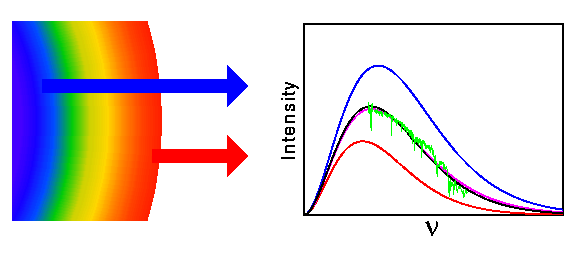
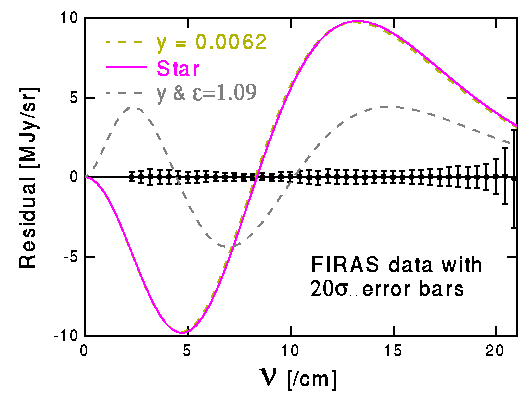
Again, this wasn’t a prediction of any of the Big Bang’s competitors, but rather the best possible way to explain the existence of a low temperature, uniform background of radiation in the context of these alternative cosmologies. But in 1992, with the first data release of the COBE satellite that measured the entire microwave sky to unprecedented resolution and accuracy, the full spectrum of this low temperature radiation was taken for the first time.
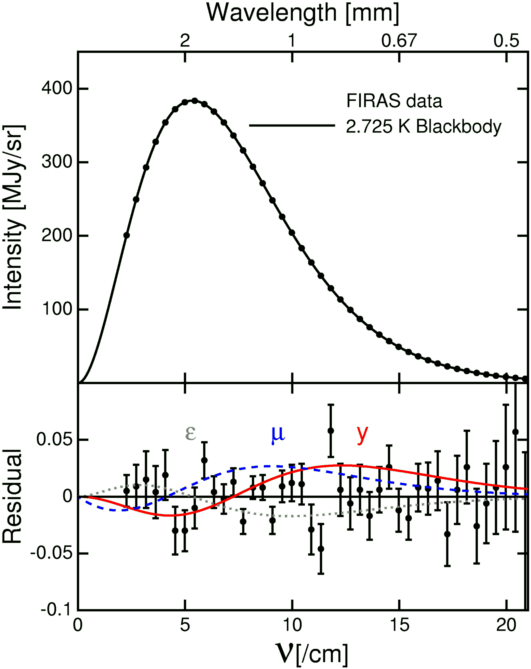
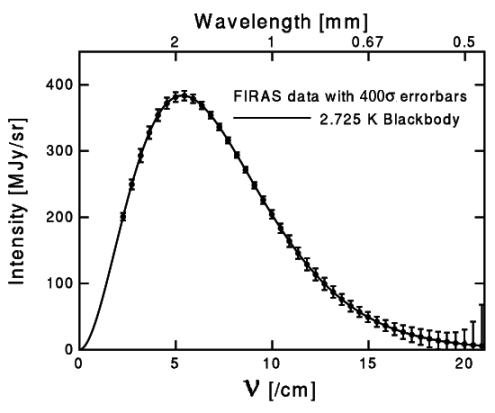
And to a stunning degree of precision, the Big Bang was confirmed, while the alternatives were soundly and definitively rejected. The Universe was uniform to around one part in 30,000, something that no modification of Tired Light nor Steady State could achieve. Any reasonable person who followed the evidence and drew their scientific conclusions based on what was out there no longer had any escape: the Big Bang was the only theory of the Universe’s origin that worked.
Our science has progressed even further, with studies of these fluctuations that occur at the 1-in-30,000 level leading to even more knowledge about the Universe, from satellites like WMAP and Planck, among others. Even as we continue down the path that the Big Bang has laid for us, we have to remember that this isn’t necessarily the only conceivable answer. There’s always the possibility that new, creative ideas could replicate all the observations of the Big Bang, and someday make new predictions that allow such a theory to be distinguished from it. In the meantime, the only explanation of the Cosmic Microwave Background that fits all the data we presently have comes from the Big Bang. Until that day comes, the Big Bang shall be no more controversial than the fact that the Earth is a nearly perfect sphere that rotates about its axis as it revolves around the Sun.
And that’s why the Big Bang’s alternatives have all died out: because our scientific observations got good enough to incontrovertibly kill them.
Leave your comments at the Starts With A Bang forum on Scienceblogs!





